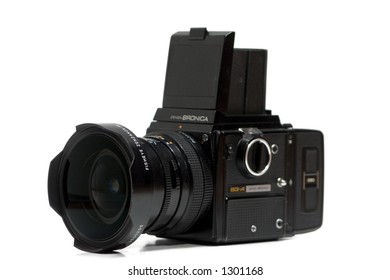

BRONICA SQ PS B LENS FULL
The goal, however, is to provide a reasonably accurate and consistent measurement in order to identify “equivalent focal lengths” to your full frame lenses that you know by heart. These crop factors are based on a diagonal measurement of the negative, so some of the odd ratios may be a little off if you are comparing them purely to the native 2:3 aspect ratio of 35mm film. Crop Factors on Medium Format Camerasįor those coming from a digital world to test the film waters with medium format cameras, the 35mm crop factor for medium format lenses and film types can be confusing when a 50mm lens can be ultra-wide and a 90mm lens is considered a normal lens.īelow, you will find a crop factor for all of the popular medium format film ratios using 120/220 roll film. It is simply that the 50mm lens has a narrower field of view on the Canon Rebel DSLR thanks to the smaller sensor. Of course, most of us understand that this is a misnomer and that the 50mm lens does not change at all to become an 80mm lens when used on a different camera. For instance, the popular Canon EF 50mm f/1.8 lenses have an 80mm equivalent focal length when used with a Canon Rebel series camera. We also commonly use the phrase “equivalent focal length” to describe the change in the field of view as captured by an APS-C sensor. However, the term is ubiquitous in identifying the altered field of view caused by using smaller sensors in cameras along with full frame lenses.

Nikon and Sony APS-C cameras yield a 1.5x crop factor, while Canon APS-C cameras have a 1.6x crop factor.Īnd, invariably, if you use the phrase “crop factor,” someone is going to yell at you and tell you that you aren’t cropping anything. Anyone that’s shot a DSLR in a remotely serious manner is aware of the crop factor for APS-C format cameras when compared to their full frame cousins.


 0 kommentar(er)
0 kommentar(er)
